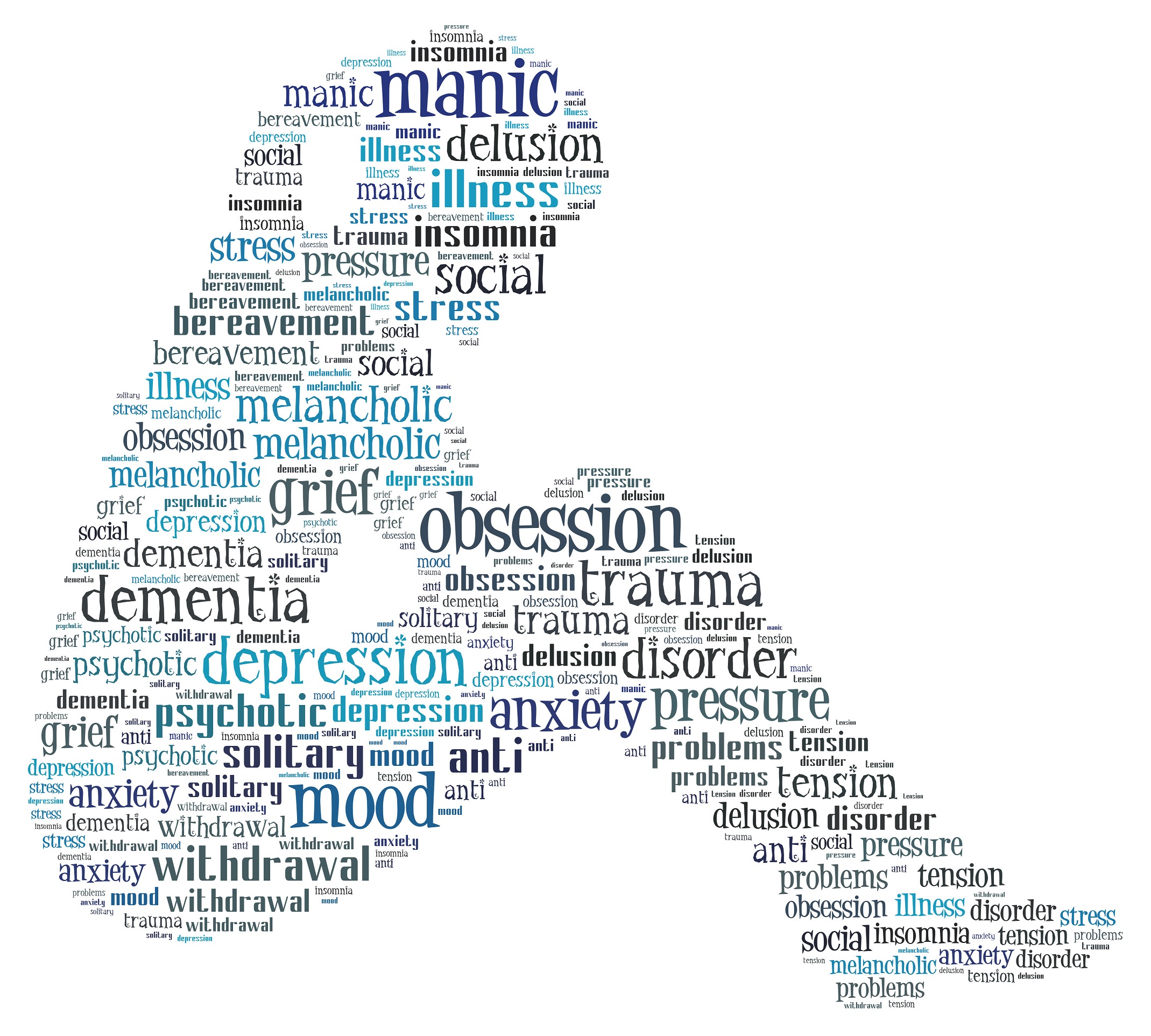
The main purpose of this particular exercise–the exercise in dis-identification–is to integrate the personality and defend the ego-conscious against a barrage of external and internal influences that might prove harmful to wellbeing and psychospiritual evolution. It does this by separating our sense of continuity, our I-amness, or the immutable part of ourselves frequently labelled as the personal self from instruments utilized by the latter in fabricating our autobiographical histories. By introducing such a dichotomy we can distance ourselves from the miscellaneous nexus of physical sensations, emotions, intellectual leanings, and thoughts that have facilitated our personal identities and an unchanging, simple, and ostensibly indestructible sense of self but which are not in themselves that self. One must at all times and in all circumstances be mindful of the fact that reality is grasped through mutable and impermanent phenomena which are not, strictly speaking, autochthonous to the centre of pure consciousness, the “I”.
On the physical level, sensations like lethargy, tiredness, and pain inundate and afflict us and then recede. Emotions or feelings are also like the ocean tides or the phases of the moon; one minute we’re seized by unforgiving rage and frustration and the next we’re bathing in the golden rays of cheerfulness, serenity, and contentment. The mental processes themselves are no exception either; we can passively or actively construct intellectual tributaries of thought that are rational or irrational and literal or symbolic in nature, and either correspond, conflict, or run parallel to one another. All the while the self-conscious aspect of ourselves that preserves continuity, the “I”, can rise like a helium balloon to a psychological atmosphere from whence all these parallel, converging, and intersecting tributaries of mentation are observed, assessed, compartmentalized, subjugated, disciplined and what not.
Our personal consciousness, our “I”, is lithe-bodied and comprehensive; it cleaves a personal history by documenting somatic, psychic, and intellectual experiences; it interjects into innumerable sensory ambiances, obsessions, anxieties, neuroses; and it continually perambulates in vivid memories of the past or mental contrivances about the future. The obvious implications of such a miraculous singularity is that the “I” can become trapped in the jungle vines of these dark, convoluted sumps and crouch holes and completely forget the unbounded recesses of pure self-consciousness, in other words the uncooked capacity for entering into the unbounded freedom of oneself. Self-proclamations like, “I am hurting,”, “I am so furious,” and “I am the child frightened of my mother who just so happens to be an unpredictable alcoholic,” are sacrilegious and dialectic to the transcendental function of the “I” because they grammatically abridge and identify the “I” with specific apparatuses of experience. The mental abridgement is obviously false, given that the “I” preserves continuity of existence whilst the stream of particular sensations, perceptions, memories, and actions experienced can come and go without any qualitative connection.
We are not our bodies, our emotions, our desires, our intellectual functions or our mind, for that matter. If we were our bodies, a war veteran who had lost a limb would have also lost something from his centre of self-consciousness, his “I-amness”. Alternatively, if we were our emotions we would be trapped in an eternal rollercoaster ride of rage or bliss with no hope of escape. By the same token if we were our intellectual faculties we would be jammed in a cogitation of sorts, perhaps the cognizance of geometric forms, unable to soar above it and see these Platonic examples in the phenomenal world. Unfortunately, most of us will either forget or completely abandon this psychological adage as we course our way through life seeking stability and financial security or fame and fortune. Forfeiting one’s ability to do this–to transcend apparatuses utilized in experiencing, understanding, and interacting with outer reality–paradoxically leads to a harrowing enslavement by the same mutable world of innumerable forms (i.e. sensations, perceptions, beliefs, biases, etc) that allowed for the generation of a personal centre of pure consciousness. In this way we become slaves to phenomena and experiences which would ordinarily be under our control, opening up the way for the establishment of idiosyncratic tendencies, neurotic behaviours, and addictions. Repeated failures to transcend or dis-identify from somatic, psychic, and cerebral particularities can, in many instances, motivate existential crises.
The following exercise will help in dis-identifying your “I”, your unique personal centre, from bodily sensations, feelings, and thoughts that demand prolonged attention and inventively coerce the ego-conscious into a disenchanting game of explicit identification:
Once you have assumed a comfortable position on the couch or sofa, begin taking deep breaths and vocalizing the following affirmations: “I am in possession of a corporeal body with which I experience the phenomenal world. Sometimes this body may become crippled by sickness, tiredness, languor, or discomfort, and at other times it may brim with supernal energies. It is subject to the laws of the corporeal world, and so the vacillations cannot be helped. This best I can do is feed, clean, and be kind to it. My body is the apparatus through which I have come to experience and know outer reality, but in actual fact it is not “I”. My body and “I” are not the same thing.
Similarly, I am aware of the feelings within me that continuously materialize without warning. I can quickly pass from a state of bliss and ecstasy into one of melancholia and despair, from a state of apprehension into one of tranquillity, and from a state of hope into one of desolation without losing sense of my-self, the I-amness that separates me from other individuals and from the greater universe. I notice the increase and decrease in their intensity, comprehend their reason for being, and follow their evolutionary development and transformation from one moment to the next. I also encompass some degree of control over them. This means that my emotions and “I” are not the same thing; I can become possessed, seized, or controlled by emotions or feelings, yet they are not myself.
At times I am fuelled by manifold physical and emotional desires–I want to eat and drink, to have sex, to be adored, and to adore in return. These too are highly mutable and paradoxical at times, appearing like the varying phases of the moon. They’re as transitory as the weather, the seasons, and everything else under the sun. One minute I desire a slice of apple pie, the next I desire relaxation and some good music. Hence by this it is implicitly understood that I have desires and that I may even be directed and controlled by them, however they are not “I”.
I obviously have an intellectual faculty which I frequently put to use; I use it as an advanced apparatus, an organic supercomputer which registers phenomena from the outer world and interprets them according to my unified system of archetypal models. It is very mouldable like plasticine and Clay-Do and constantly active; it provides me with the means by which I encounter reality, however I can also say that it is not myself. My intellect and “I” obviously work together but we are not the same thing.
In retrospect I acknowledge that sensation, feeling, desire, and mentation comprise individual units in my experience of the world but are not in fact “I”, my personal centre of consciousness. I am in fact, a centre of pure consciousness and will, able to induct these contents into the service of self-consciousness for the evolution and benefit of my personal spirit. I can utilize any one or all of these physical and psychological processes, at any time, without the morbid fear that they might control, direct, or overpower me at any instant. I govern the contents of consciousness at all times, in all places.
What then is this? It is “I”, “I-amness”, and my-self. After emptying the conscious vessel of somatic and psychic impressions, and of everything that might be considered an ego construct, I realize that I am a centre of pure consciousness and self-realization. I am a pillar of stability, sanctuary, and indestructibility in the ever-fluctuating and evanescent world mediating my own life. It is the unwavering part of me that I recognize as subsisting through time and space; the part of me that often yields to the psychospiritual winds; and the part of me that melts and reforms in the psychic furnaces of the interactive field whilst paradoxically remaining virtually unchanged. I am, without a doubt, a self-conscious unit characterized by both static and dynamic elements; I observe, assess, compartmentalize, direct, and exploit somatic and psychological processes to my advantage and prohibit the appropriation of my sacred centre, my “I”. I am the heart-centre of awareness and power.”
Note: Utilize this technique each time you feel that you are getting precipitously close to overidentifying with a particular sensation, emotion, desire, thought, or belief.









